- leun's home page
- Posts
- 2013
- 2012
- December (2)
- October (3)
- September (2)
- August (1)
- July (4)
- June (4)
- May (2)
- April (3)
- March (5)
- February (5)
- January (5)
- 2011
- December (3)
- November (3)
- September (5)
- August (2)
- July (2)
- June (3)
- May (4)
- April (4)
- March (2)
- February (4)
- January (2)
- 2010
- December (2)
- November (3)
- October (3)
- September (5)
- August (6)
- July (2)
- June (4)
- May (3)
- April (4)
- March (4)
- February (2)
- January (4)
- 2009
- 2008
- October (1)
- My blog
- Post new blog entry
- All blogs
FMS meeting 20110103 - Bin migration and other issues
Bin Migration Due to Crappy E-resolution
Before we switched to Cerenkov, we estimated the bin rolling down hill effect to be fairly small. This was because the predicted energy resolution based on charged particle energy loss was very good. This was of course always folded into the efficiency correction, and because the effect was thought to be small, I didn't worry about the details like how precisely the X-section in GSTAR matches the data.
Fig. 1. Energy resolution in full simulation, two photon events, with E-loss
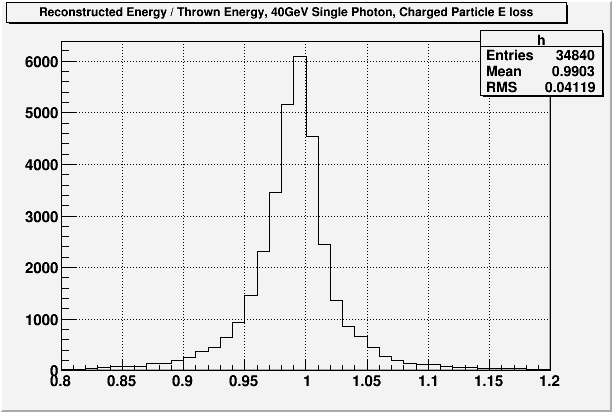
~3.5% of the events have over 110% of thrown energy
~1.8% of the events have over 120% of thrown energy
~1.3% of the events have over 130% of thrown energy
But as I've posted previously, (without paying as much attention as I should've) with Cerenkov photon counting, it's a totally different story.
Fig. 2. Energy resolution in single photon only GSTAR, with Cerenkov CORRECTION: This plot is Summed Energy (not reconstructed) over Generated
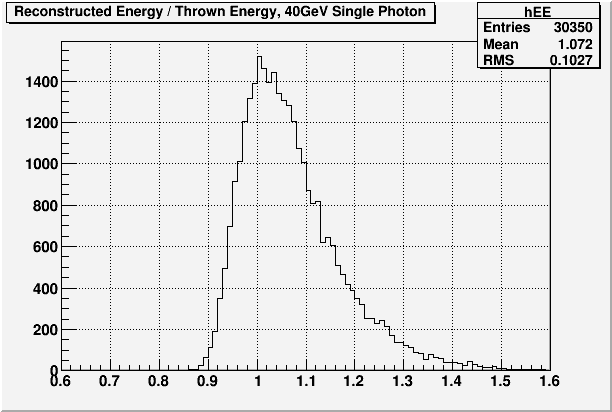
~31.% of the events have over 110% of thrown energy
~11.% of the events have over 120% of thrown energy
~3.5% of the events have over 130% of thrown energy
Now the bin migration is a serious issue, as shown by the following plots.
Fig. 3. Fraction of events that has the thrown energy in the same bin, from full simulation with Pythia filter at 40GeV
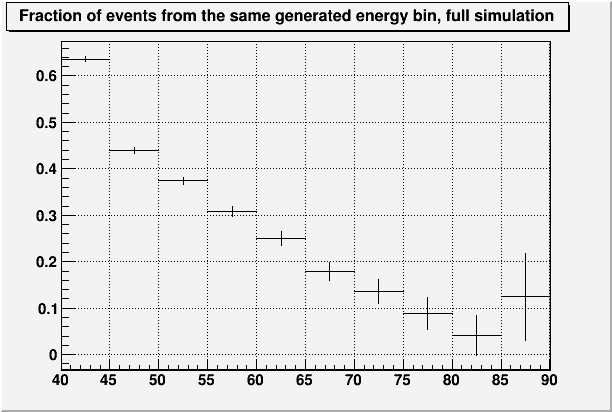
Fig. 4. Thrown energy for the bin 50GeV < E_recon < 55GeV

1. Majority of events are now coming from previous bins, meaning that now we have to really worry about the shape of the X-section between data and simulation
2. It also means that the 40GeV Pythia filter actually has an effect on much higher energy bins, contrary to my original intention. At the same time, the trigger threshold in the data will also have an effect on very high energy bins.
3. The magnitude of this bin migration effect actually changes as a function of energy, suggesting that the X-section in the simulation is, while seemingly close enough to an exponential, getting softer as the energy increases. If it was exponential across all energy, then this effect should be energy independent. This turns out to be the main reason that we see energy dependent mass shift.
Fig. 5. Energy dependent gain shift in full simulation (E_recon / E_thrown vs. E)
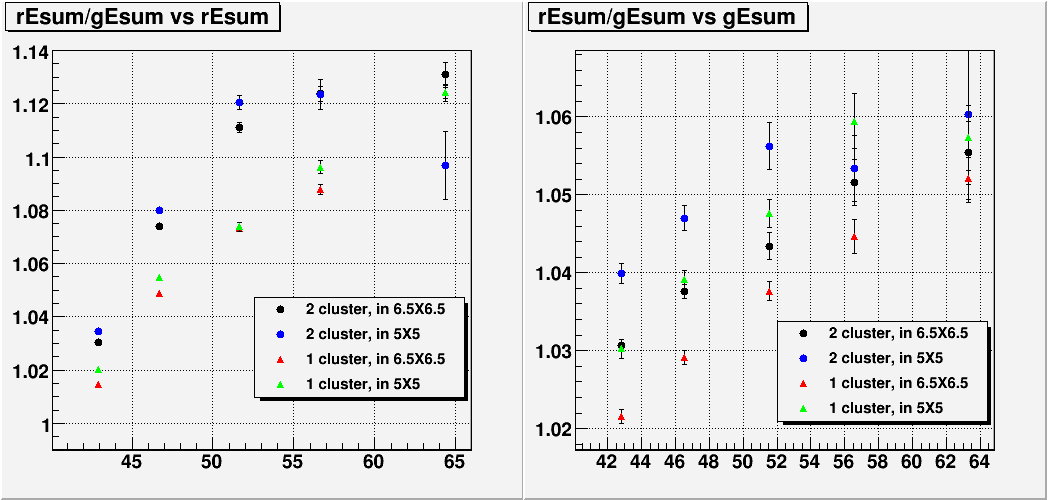
With binning in reconstructed energy, the shift in gain is ~10% over the range plotted. With binning in thrown energy, it's only ~3% over the same range. This 3% over ~20GeV is the real gain shift caused by the shift of shower max. The rest (apparently) is bin migration.
And finally, we look at the X-section difference between data and simulation.
Fig. 6. Energy distribution for Pi0s, no correction. BLACK and BLUE are for the data (North and South) and RED is for the simulation.
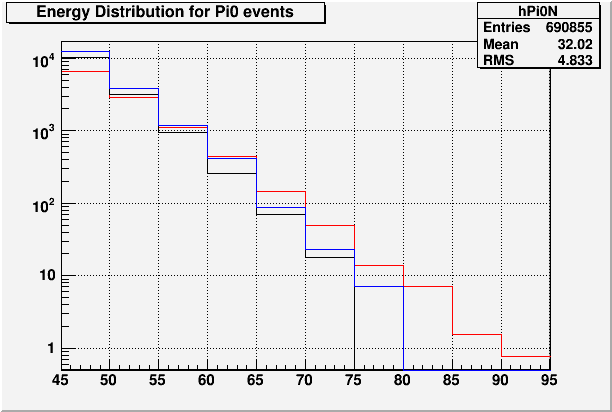
So the difference is there, and I have to worry about how to do the efficiency correction.
Calibration
For the most part, these issues don't affect the calibration much, which is done at a fixed energy point. (Except to the extent that we have to worry about below Pythia filter events)
Both simulation and data was re-calibrated using the shower function obtained from GSTAR by doing segmented single photon runs. This shower shape does not agree exactly with the data, but at this point the strategy is to use this simulation based shower shape for both simulation and data, and estimate the systematics accordingly.
Fig. 7 Shower shape in data with new shower function
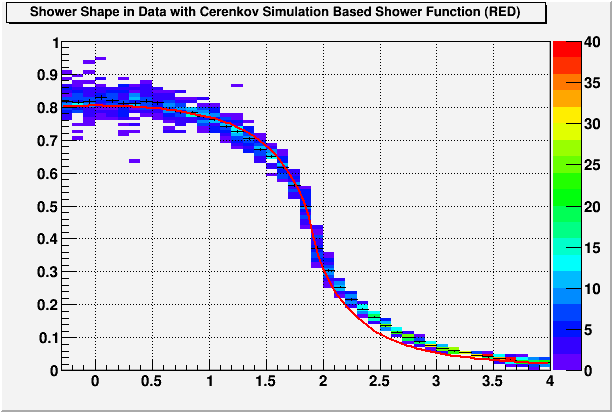
For calibration, I worry about primarily two things. The angle dependence and separation dependence of the mass. For the following plots, BLACK and BLUE are for the data (North and South) and RED is for the simulation.
1. Angle dependence of the mass. We've looked at this before, but now that the shower function has changed somewhat, and everything re-calibrated, here we look at it again.
Fig. 8. Mass (for two cluster events) vs. decay angle, in column 1, 2, 3~4 and 5~7.
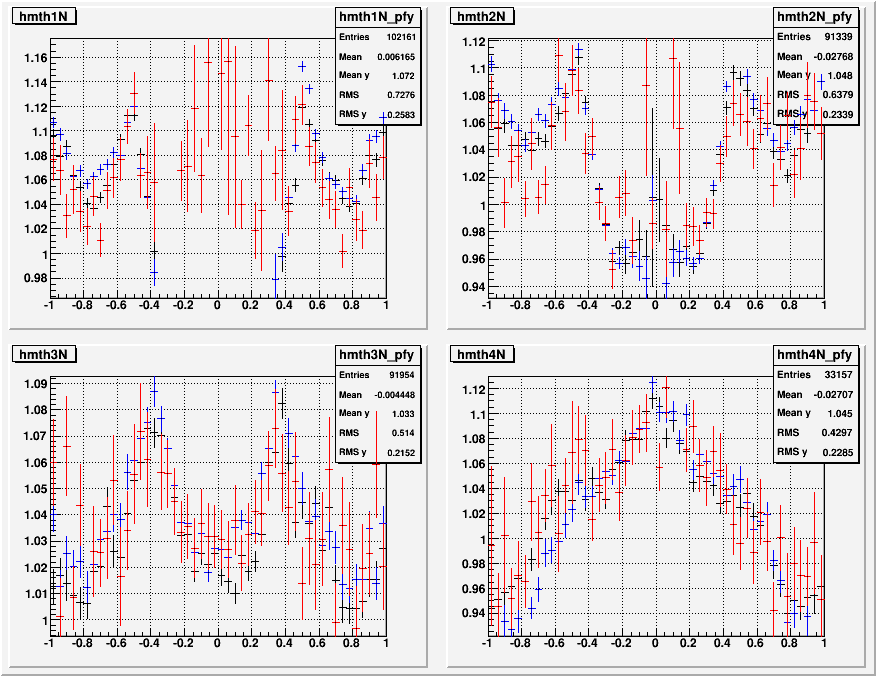
2. Separation dependence of the mass. Since the shower shape is still slightly different between simulation and data, we would expect some deviation here, especially at small separation. But at large separation, they should agree well.
Fig. 9. Mass (for two cluster events) vs. separation
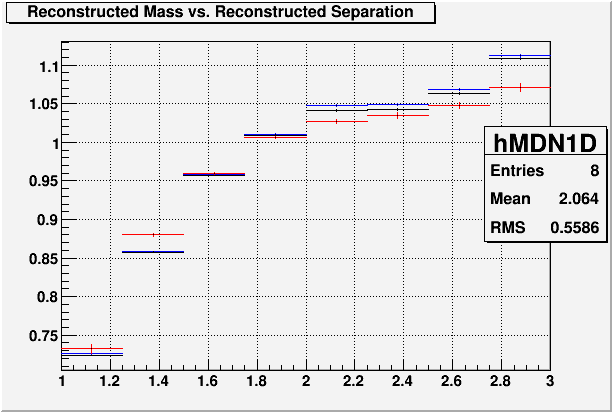
My feeling is that at this point the data is still couple of percent too high. But overall, I would say that the calibration can be done right with all the pieces considered.
Finally, a couple more plots to show the status of calibration.
Fig. 10. Mass distribution in energy bins, for center cut events
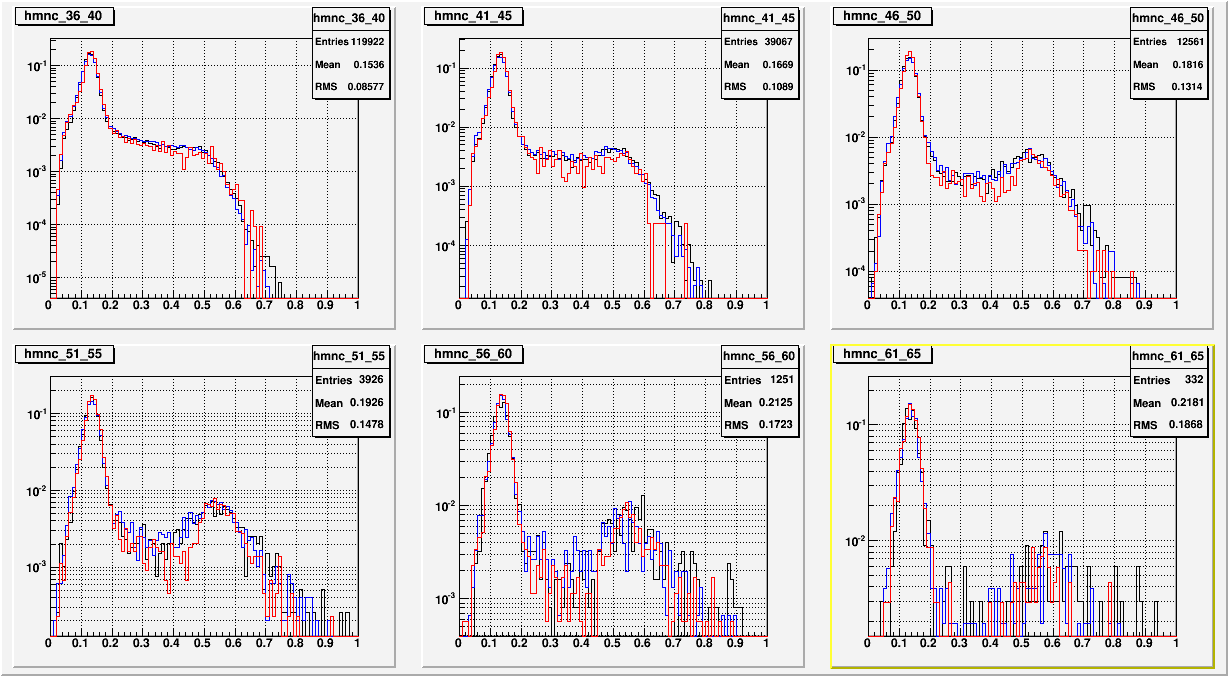
Fig. 11. Separation distribution in energy bins, for all events.
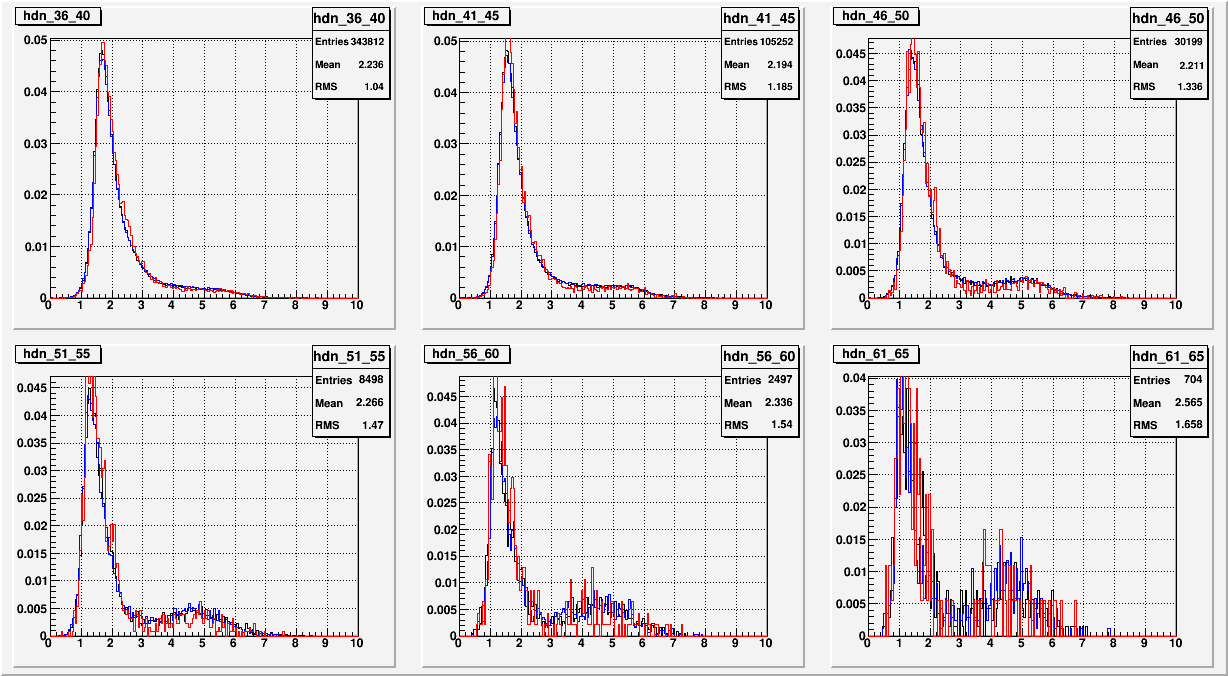
- leun's blog
- Login or register to post comments
